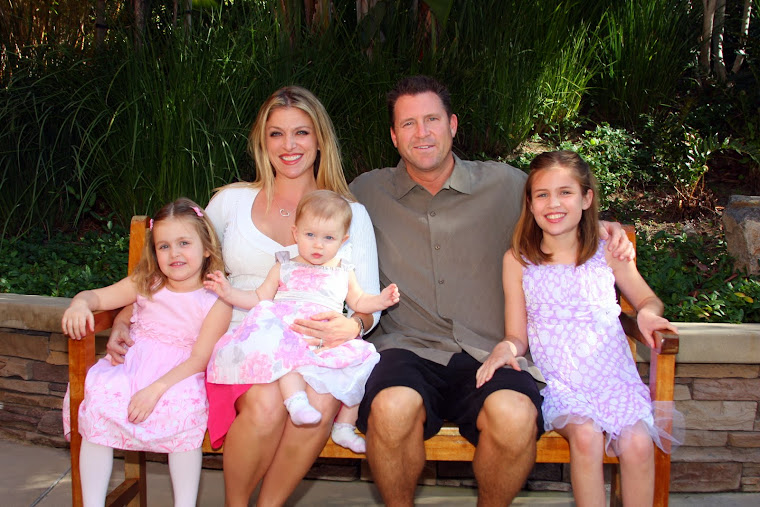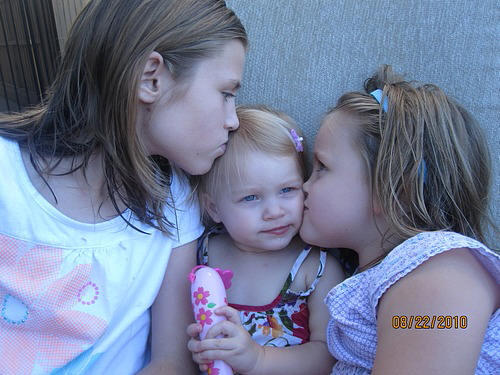Patience is a virtue because it makes us better people. The definition of the word is to tolerate delay. This implies self control and forbearance as opposed to wanting what we want when we want it. All we can do is wait and then call to find out how much longer we have to wait. We are waiting for the geneticist, neurologist, insurance approvals, psychologists, etc. I do have to say that Cali and Ryann are healthy, happy and beautiful thank God! I can’t stop myself from looking at their sweet little faces and into their big blue eyes and imagining what if? What if they were typical and not struggling every day to do the little things we all take advantage of. I stop myself because there are so many families waiting for answers and facing the same challenges as us and their kids are getting sicker by the minute and some are even dying. The rare disease world is a scary reality with many unanswered questions by many medical professionals. It has to be the most difficult experience any parent can go through, wanting to help their child get better and no one knows what to do to help. On top of that we are asked to wait for the next appointment with the next doctor and then they give us an answer of "I don’t know, whatever it is it is very rare." Our response, " Really? Rare? We didn’t know that, thanks for nothing!"
As of now our waiting game continues. We received Cali's and Ryann's MRI results and the radiologist and neurologist have suggested a diagnosis of CEREBELLAR HYPOPLASIA (VLDR-associated). I have listed the Google explanation below. The good news is this disease is non progressive, bad news is there is no treatment. Now we are waiting for the genetics team to look at Cali's and Ryann's records and determine how urgent their case is and then they will set our appointment (most likely for two months out). The geneticist will then do genetic testing and see if the girls test positive for this possible diagnosis or any other named diseases.
If they do find a diagnosis it will be an incredible miracle because most rare diseases are undiagnosed. There are more families than you can imagine that are fighting for their child's life and against time to find answers and never do. HOW DO WE NOT KNOW MORE ABOUT OUR GENES? HOW DO WE LEARN MORE ABOUT GENETICS AND RARE DISEASE? These are very important questions that need answers. It is crucial for our kids and someday their kids to become more educated and aware of RARE diseases and how our genetics plays a part. I know I knew nothing about genetics until now and even now I know very little. It’s a world of question marks and sick kids and it’s not a good world to realize that we live in. We can HELP and I am COMMITTED to do so. I will FIGHT to help our children, their future depends on us.
The fight continues and I become a better person in the process. My patience is tested daily but I know this fight is what I am meant to do. Cali and Ryann are our blessing and an amazing gift and I will never give up trying to help them live the best life possible.
CLINICAL CHARACTERISTICS:
General description: Delayed development in motor functions is evident in the first year of life. Unsteadiness may delay unassisted walking for 5 to 20 years. The condition is usually nonprogressive. Speech may also be abnormal, seizures are often present, and many patients have more widespread brain dysfunction with mental retardation. Individuals can be short in stature as well.
Medical description: Abnormal neuroblast migration during development results in nonprogressive cerebral and cerebellar signs including severe ataxia, mental retardation, speech and motor retardation, and often seizures. Short stature is seen in 15% but intention tremors and athetoid posturing are more common. MRI shows inferior cerebellar hypoplasia and simplification of the cortical gyri.
GENETICS: Among eight patients from three related Hutterite famiies, a 199 base pair deletion was found in the VLDLR gene on chromosome 9 (9p24). VLDLR encodes the very low density lipoprotein receptor, and is part of a signaling pathway which directs the migration of neuroblasts in the cerebral cortex and cerebellum. Homozygosity of the deletion in these patients and the relationship of their Hutterite parents suggest autosomal recessive inheritance.
TREATMENT: No treatment is available.
PROGNOSIS: This is a nonlethal condition although severe disability is present.
ANCILLARY TREATMENTS AND SUPPORT: General supportive care. Physical therapy and mobility training may be useful.
Thursday, June 3, 2010
Subscribe to:
Comments (Atom)






